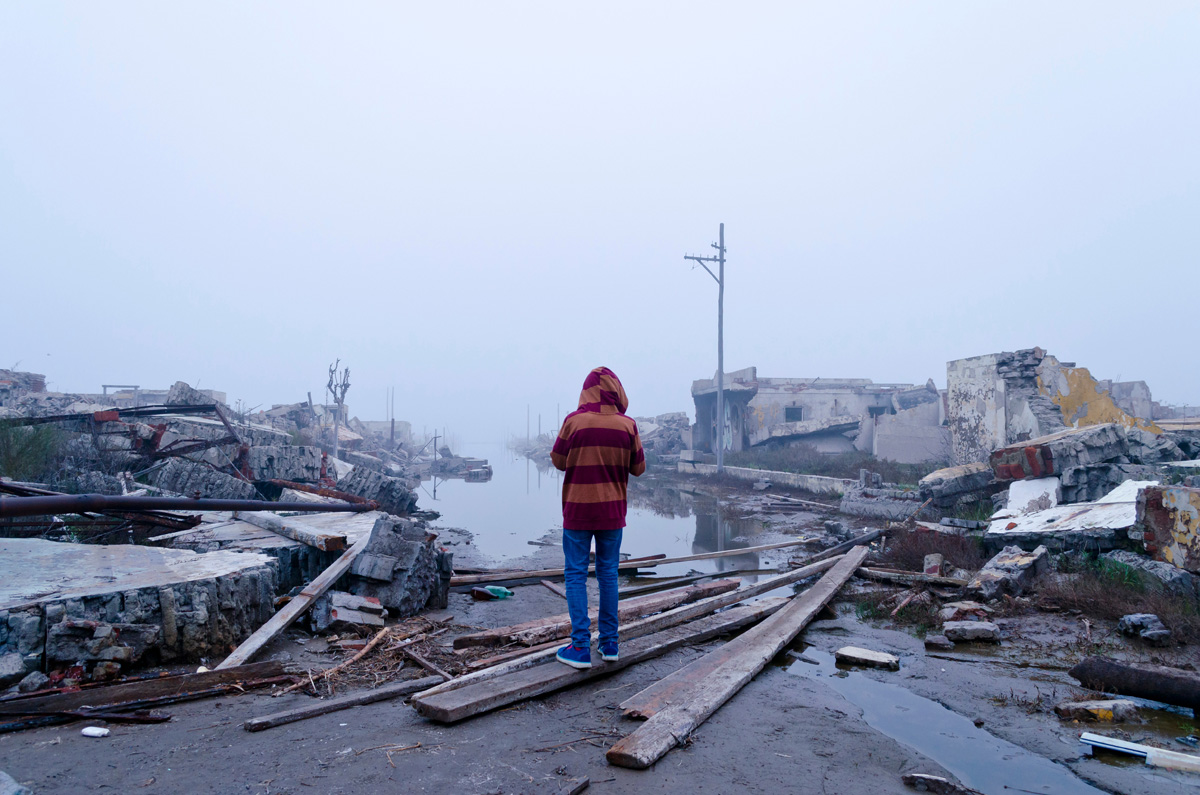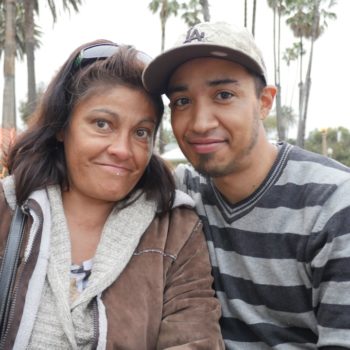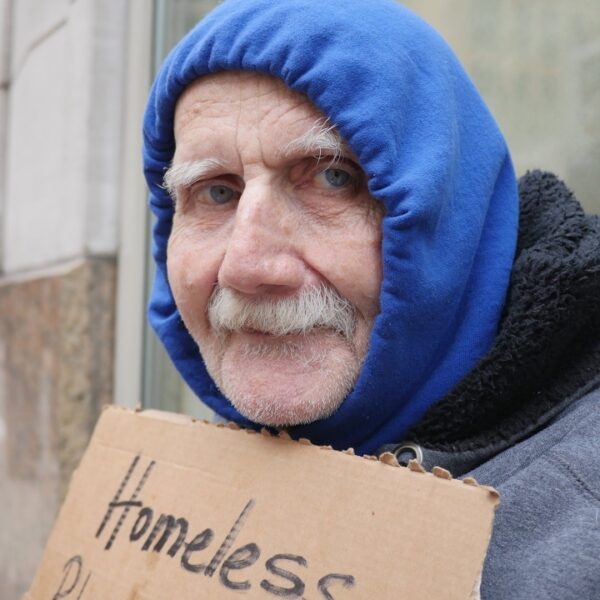Homeless Populations Across the U.S. Will Grow as More Natural Disasters Strike
In September, right as unprecedentedly extreme wildfires were ravaging the West Coast, the New York Times published a harrowing story about how climate change will force millions of Americans to leave, semi-voluntarily or forcefully, their current residences.
This past summer, Phoenix endured 53 days of 110 degree heat. Northern California continued to experience devastating wildfires. And the Gulf coast suffered from more deadly hurricanes. These places may very well become uninhabitable.
Of course, not everyone will suffer equally. The population shift “is likely to increase poverty and widen the gulf between the rich and the poor”. Climate catastrophe also disproportionately impacts communities of color, who are also already more likely to experience homelessness. In order to combat mass homelessness in the face of climate change, something huge needs to change.
The Crisis Is Happening Now
This isn’t something that will happen in the distant future, either. Following September’s Almeda Fire in southern Oregon, existing camps of homeless people visibly grew. According to the Oregonian, more than 2,300 residential structures in Jackson County, where the fire broke out, were lost, displacing about 3,000 people. And most of those residential structures were manufactured mobile homes, sending some people who just got on their feet back into homelessness.
The way we currently address homelessness will not suffice as more and more people are without a place to live.
Housing prices in most U.S. markets are rising much faster than wages. This will only get worse as housing supply diminishes due to natural disasters.
The Oregonian said that “even before the fire, Jackson County was dealing with an acute shortage of affordable housing. And in mere hours, the wildfire consumed a big chunk of the supply in the Rogue Valley, exacerbating the problem.”
The extreme fires that hit the West Coast more and more each year have destabilized thousands. An article in The Guardian talks about a woman who lost her home in 2018’s Camp Fire in Butte County, California. Since then, she has lived in a trailer, couch-surfed and even slept in a tent on the street in Oakland.
The Northern California city of Chico has had a major population boom thanks to destructive wildfires in nearby towns, causing a separate problem. In Chico, “traffic, and collisions, waste management and sewage use increased significantly. Butte County was already facing a housing shortage, and the fire worsened it. Evacuees struggled to find apartments in the area. In the month after the fire, Chico had the top real estate market in the US in terms of interested buyers.”
What’s happening in Chico isn’t unique, however. Researchers have coined a term, “climate gentrification,” to define what happens when people move en masse after a natural disaster. This ripple effect will drive up housing prices in “refuge” cities across the country, creating even more homelessness.
Who Counts as a Climate Migrant?
The situation becomes even trickier when you try to determine who is a “voluntary” or “forced” climate migrant. For example, there is a difference between being displaced due to a forest fire burning down your home and relocating from a place that has become very uncomfortable due to climate change. This makes it difficult to define who, exactly, is a “climate refugee.”
Jane McAdam’s 2010 book, “Climate Change and Displacement: Multidisciplinary Perspectives” points out that there are different reasons someone might relocate due to climate change.
“The line between movement that is ‘voluntary’ or ‘forced’ is also very blurred, and people’s decisions will involve a delicate mix of both elements in different proportions,” McAdam writes. “The fact that there is still no internationally agreed definition of what it means to be an environmental ‘migrant,’ ‘refugee’ or ‘displaced person’ makes it difficult to systematically progress deliberations about appropriate multilateral legal and institutional responses.”
Defining this will be important as people seek government assistance to secure safe shelter in a new place. People whose homes have been destroyed in a natural disaster can receive government aid or insurance money to help them rebuild. People who move because an area’s climate has just become too hot won’t get the same help … at least not yet.
This means that the people who are able to relocate to more comfortable environments are going to have some amount of wealth and security that others don’t have. In Arizona, as heat in the southern part of the state becomes stifling – but not technically unlivable –climate gentrification is becoming a real problem. People with means can leave the area during the summer and move up north, creating housing crises in Flagstaff. Meanwhile, lower-income folks are left to suffer in the heat.
Living Unsheltered Through a Natural Disaster
For homeless people, experiencing the effects of climate change without a steady place to live can be detrimental. For the more than 150,000 people in California who are homeless, the ever-expanding fire season creates hazardous health conditions.
There are a lot of unknowns about the specific long-term dangers that might come from continuously breathing in smoke from forest fires. But it’s certainly not healthy. And for people who are already more likely to face health issues and have trouble accessing help, this is just another thing to worry about.
Heat waves can be deadly, too. Without shady or air-conditioned shelter and regular hydration in triple digit heat, your body will start to shut down. At least three presumed homeless people died during a heatwave in Los Angeles this year. With more of these extreme weather events and natural disasters, homeless people are very vulnerable. And their numbers will continue to grow.
How to Help
In the short-term, you can help someone who is unsheltered during an extreme weather event. Encourage your city to establish cooling and warming centers for unsheltered people, and clean air respite centers during wildfires.
In the long-term, cities need to help serve their homeless populations much better by creating affordable housing and making sure everybody has a place to live, especially as people start migrating away from intense climates.
There are some cities who have rebuilt after natural disasters who can be looked to as an example. New Orleans suffered from a major homelessness crisis after Hurricane Katrina in 2005 and implemented housing policies as a result. In 2007, the city of New Orleans had more than 11,600 homeless people. By 2018, that number was down 90 percent.
Their efforts haven’t been perfect. Homelessness in New Orleans may be on the rise again. But their “housing first” method, which focuses just on providing homes and services to people in need without making them solve drug or mental health problems first, proved successful in the wake of the natural disaster.
End the Stigma
Stigmatizing homelessness is always harmful. And it’s becoming more so as homeless populations grow due to climate change, economic turmoil and an affordable housing crisis. Natural disasters could always strike, and you may be more vulnerable than you think.
It’s difficult for many people who haven’t experienced homelessness personally to envision what it might look like. Homeless people are seen as outsiders, regardless of their personal situation. It’s time to care for your neighbors who are unhoused. As climate change gets worse, you could be in their situation one day.













